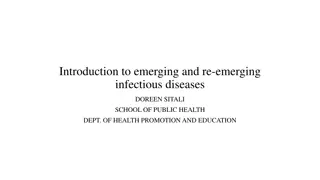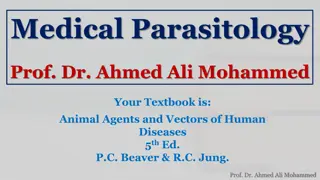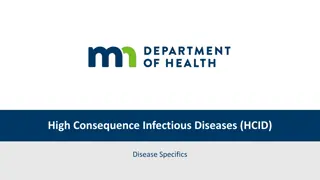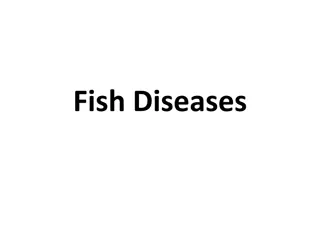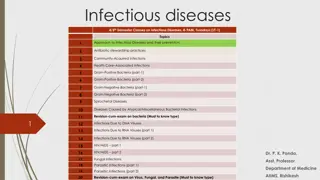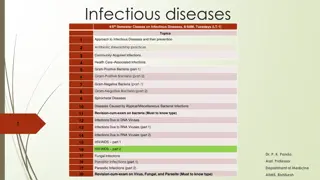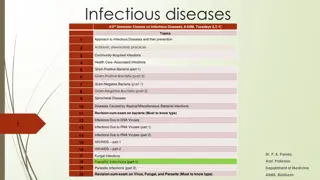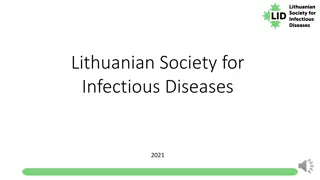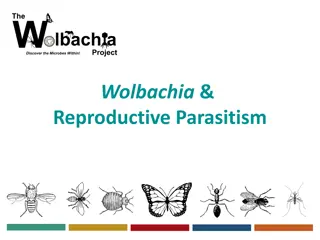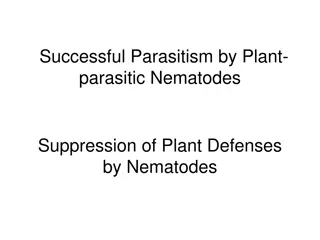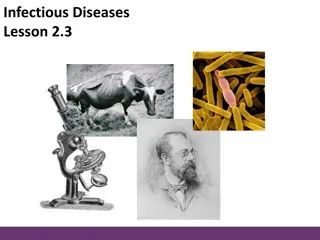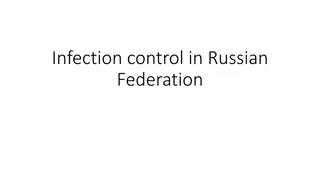Understanding Pathogenicity in Infectious Diseases and Parasitism
Pathogenicity refers to the ability of a pathogen to cause disease in plants, humans, and animals. Infectious diseases and parasitism play key roles in the spread and development of epidemics. Parasites can hinder the normal growth of plants by extracting nutrients, while different types of parasites exhibit varying modes of survival and interaction with host organisms. The damage caused by pathogens can be extensive, affecting essential functions of the host and leading to disease conditions.
Download Presentation

Please find below an Image/Link to download the presentation.
The content on the website is provided AS IS for your information and personal use only. It may not be sold, licensed, or shared on other websites without obtaining consent from the author. Download presentation by click this link. If you encounter any issues during the download, it is possible that the publisher has removed the file from their server.
E N D
Presentation Transcript
Infectious diseases The pathogen that attack plants belong to the same groups of organisms that cause diseases in humans and animals. Infectious diseases are those that result from infection of a plant by a pathogen. In such diseases, the pathogen can grow and multiply rapidly on diseased plants, it can spread from diseased to healthy plants, it can cause additional plants to become diseased, thereby leading to the development of a small or large epidemic.
Parasitism and Pathogenicity Parasite- An organisms that lives on or in some other organisms and obtain its food from the latter is called parasite. Parasitism- the removal of food by a parasite from its host is called parasitism. Plant parasite- is an organism that becomes intimately associated with a plant and multiplies or grows at the expense of the plant. The removal by parasite of nutrients and water from the host plant usually reduces efficiency in the normal growth of the plant and becomes detrimental to further development and reproduction of the plant.
Pathogenicity the ability of a pathogen to cause disease, as the ability of the parasite to invade and become established in the host generally results development of a diseased condition in the host. In most plant however, the damage caused to plants is often much greater than would be expected from the mere removal of nutrients by the parasite. This damage results substances secreted by the parasite or produced by the host in response to stimuli originating in the parasite Tissues affected by such substances may show- increased respiration, disintegration or collapse of cells, wilting, abscission, abnormal cell division and enlargement, and degeneration of specific components such as chlorophyll. It would appear, therefore, that the damage caused by a parasite proportional to the nutrients removed by the parasite from its host. Pathogenicity, then, is the ability of the parasite to interfere with one or more of the essential functions of the plant, thereby causing disease. in the diseases, amount of is not always additional from
Pathogenicity 1. Only a few members of a few groups can parasitize plants: fungi, bacteria, mollicutes, parasitic higher plants, parasitic green algae, nematodes, protozoa, viruses, and parasites are successful because they can invade a host plant, feed and proliferate in it, and withstand the conditions in which the host lives. 1. Some mollicutes, some fastidious bacteria, nematodes, protozoa, and fungi causing downy mildews, powdery mildews, and rusts, are biotrophs, i.e., they can grow and reproduce in nature only in living hosts, and they are called obligate parasites. 2. Other parasites (most fungi and bacteria) can live on either living or dead hosts and on various nutrient media, and they are therefore called nonobligate parasites. 3. Some nonobligate parasites live most of the time or most of their life cycles as parasites, but, under certain conditions, saprophytically on dead organic matter; such parasites are semibiotrophs and are called facultative saprophytes. 4. Others live most of the time and thrive well on dead organic matter (necrotrophs) but, under certain circumstances, may attack living plants and become parasitic; these parasites are called facultative parasites. parasites, including viruses, viroids, viroids. These may grow





